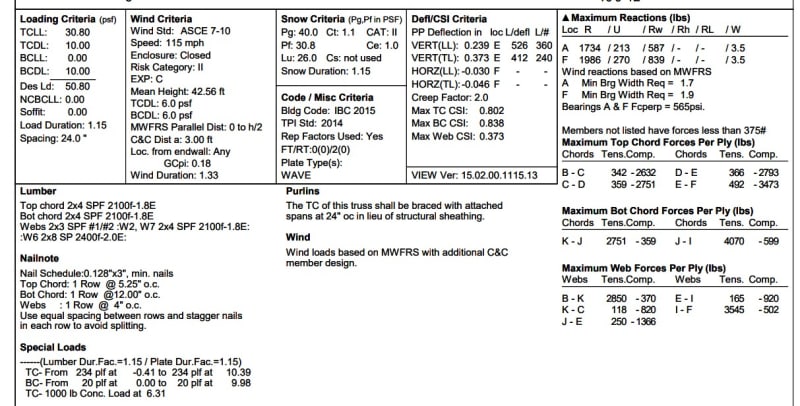I have a project where I'm checking some garage attic trusses that were modified by a contractor to fit in some stairs.
My question though is about the top chords of the trusses and their effective lengths. For out of plane buckling, is it correct to assume that the top chord is braced by the roof sheathing, giving a K value less than one?
My question though is about the top chords of the trusses and their effective lengths. For out of plane buckling, is it correct to assume that the top chord is braced by the roof sheathing, giving a K value less than one?

